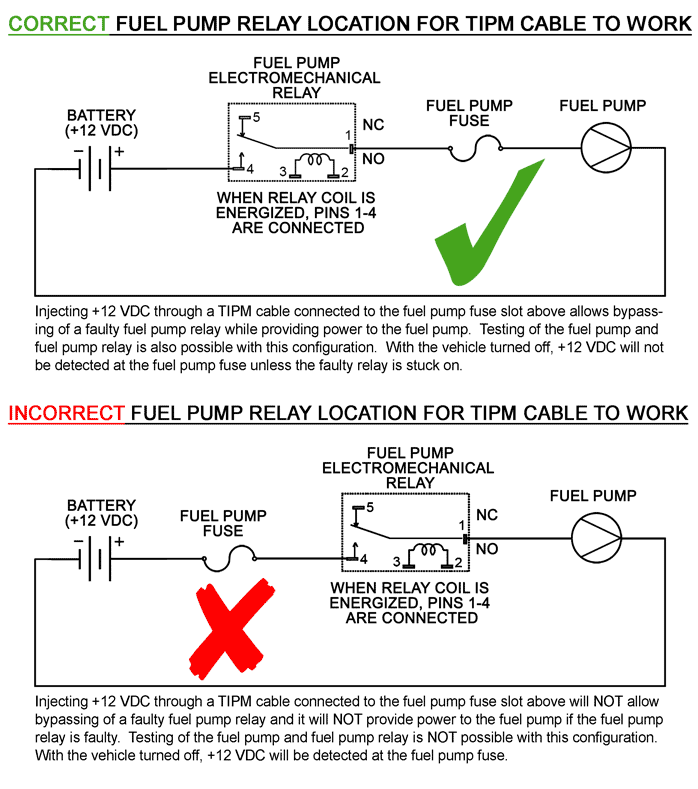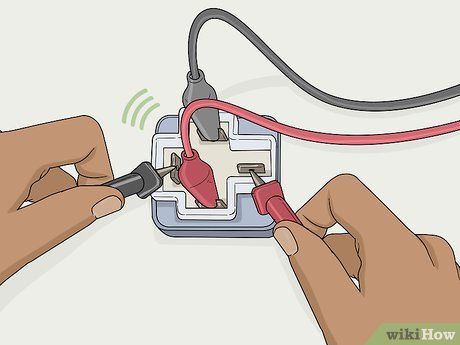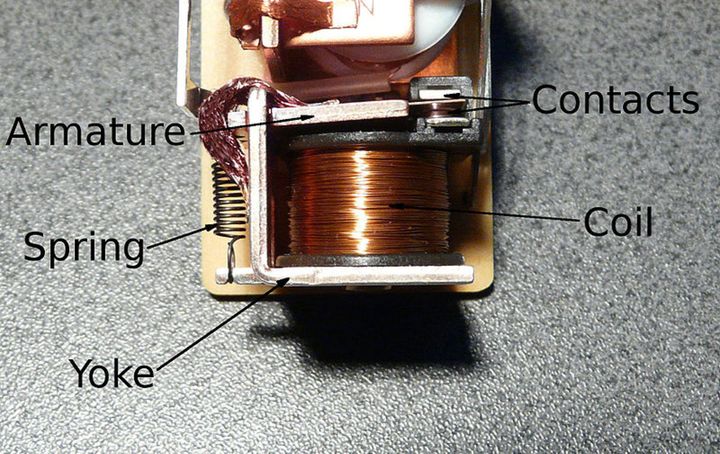


The fuel pump relay is a crucial component in a vehicle's fuel system, responsible for controlling the power supply to the fuel pump. It acts as an intermediary between the vehicle's electrical system and the fuel pump, ensuring that the pump receives the necessary electrical current to operate effectively.

Before we dive into the testing process, let's briefly discuss the role of the fuel pump relay in your vehicle. The fuel pump relay is a crucial component that controls the power supply to the fuel pump. When you turn the ignition key, the relay receives a signal and closes the circuit, allowing electricity to flow to the fuel pump. This, in turn, pumps fuel from the tank to the engine.
There are several reasons why a fuel pump relay may fail, leading to issues with your vehicle's fuel delivery system. Here are the most common causes:
| Cause | Description |
|---|---|
| Faulty Relay | The relay itself fails to provide power to the fuel pump due to internal damage or corrosion. |
| Stuck or Corroded Relay | A stuck or corroded relay can prevent it from closing the circuit properly. |
| Wiring Issues | Loose connections or damaged wires can affect the relay's operation. |
One of the easiest ways to diagnose a potential fuel pump relay issue is to listen for the fuel pump noise when you turn the ignition key. When the relay is functioning correctly, you should hear a brief whirring or humming sound as the fuel pump activates. If you don't hear this noise, it could indicate a problem with the relay or the fuel pump itself.
Another telltale sign of a stuck fuel pump relay is battery drain when the vehicle is off. If the relay is stuck in the closed position, it will continue to provide power to the fuel pump, draining your battery over time. To check for this:
Disconnect the negative battery terminal
Use a voltmeter (if available) to measure the voltage across the battery terminals after a few hours
If the voltage drops significantly, it could indicate a stuck relay
Visually inspecting the fuel pump relay can also provide valuable clues about its condition. Locate the relay, which is usually situated in the engine bay fuse box or near the fuel tank. Carefully remove the relay and examine it for any visible signs of:
Damage
Corrosion
Loose connections
If the relay appears to be in poor condition, it may need to be replaced.
In some cases, a stuck or corroded relay can be temporarily resolved by gently tapping it while the ignition is on. This can sometimes dislodge any debris or corrosion that may be preventing the relay from closing the circuit properly. If tapping the relay causes the fuel pump to activate, it's a strong indication that the relay needs to be replaced.
If you've determined that the fuel pump relay is the culprit, follow these steps:
Carefully remove the relay
Clean any corrosion or debris from the relay socket and terminals using a wire brush or electrical contact cleaner
If the relay itself is damaged or stuck, replace it with a new one, ensuring you get the correct relay for your vehicle make and model
Install the new relay and reconnect it securely
Test the fuel pump operation by turning the ignition key and listening for the fuel pump noise

To prevent future fuel pump relay issues, consider these preventive measures:
Regularly inspect and clean the relay socket and terminals to prevent corrosion buildup
Check for any loose wiring connections and secure them properly
Replace the relay periodically as part of routine maintenance, especially in older vehicles
Avoid exposing the relay to excessive moisture or heat, which can accelerate degradation
| Repair | Cost Range |
|---|---|
| New Fuel Pump Relay | $10 - $30 |
| DIY Replacement | Only the cost of the new relay |
| Professional Assistance | $50 - $150 or more (includes labor costs) |
If you need to replace the fuel pump relay, the cost of a new one typically ranges from $10 to $30, depending on your vehicle's make and model. If you can perform the replacement yourself, the only cost will be for the new relay. However, if you require professional assistance, you'll need to factor in labor costs, which can range from $50 to $150 or more, depending on the repair shop and your location.
Testing and diagnosing a fuel pump relay without a multimeter is certainly possible, and the steps outlined in this article can help you identify and potentially resolve the issue. However, it's important to note that while these methods can be effective in some cases, using a multimeter can provide more accurate diagnostics and help identify other potential issues in the electrical system.
Regardless of whether you choose to tackle the repair yourself or seek professional assistance, understanding the basics of fuel pump relay testing can save you time, money, and frustration. By following the steps outlined in this article and practicing regular maintenance, you can help ensure your vehicle's fuel delivery system remains in top condition.
The fuel pump relay controls the power supply to the fuel pump, allowing electricity to flow and pump fuel from the tank to the engine.
Common signs of a faulty fuel pump relay include no fuel pump noise when turning the ignition key, battery drain when the vehicle is off, and visible damage or corrosion on the relay.
Yes, a stuck fuel pump relay can lead to additional problems, such as a drained battery, fuel pump overheating, and potential fire hazards.
If tapping the relay does not activate the fuel pump, it is likely that the relay needs to be replaced with a new one.
Yes, you can use a test light to check if the relay is receiving power and if it is sending power to the fuel pump when the ignition is turned on.
It is recommended to replace the fuel pump relay periodically as part of routine maintenance, especially in older vehicles or if you notice any signs of wear or corrosion.
Yes, if the fuel pump relay is not functioning correctly, it can lead to insufficient fuel delivery, causing the engine to stall or misfire.
If you cannot locate the fuel pump relay, consult your vehicle's repair manual or seek professional assistance to identify its location and properly diagnose the issue.
While it is possible to use a jumper wire to bypass the fuel pump relay temporarily, it is not recommended as a permanent solution, as it can lead to potential safety hazards and damage to the electrical system.
Attempting to repair the fuel pump relay yourself carries risks, such as potential electrical shocks, damage to the vehicle's electrical system, and potential fire hazards if not done correctly. It is essential to follow proper safety precautions and seek professional assistance if you are unsure or uncomfortable with the repair process.

Sarah isn't your average gearhead. With a double major in Mechanical Engineering and Automotive Technology, she dived straight into the world of car repair. After 15 years of turning wrenches at dealerships and independent shops, Sarah joined MICDOT to share her expertise and passion for making cars run like new. Her in-depth knowledge and knack for explaining complex issues in simple terms make her a valuable asset to our team.











